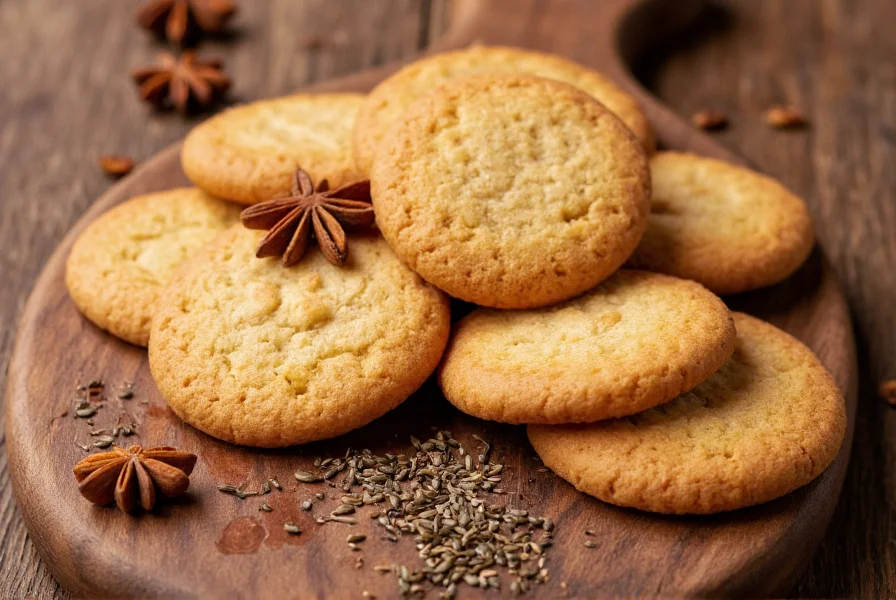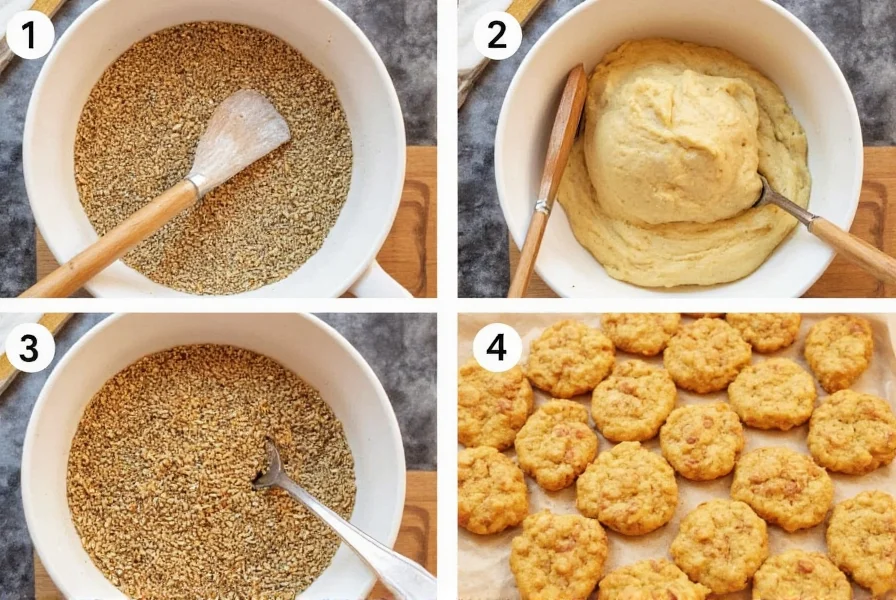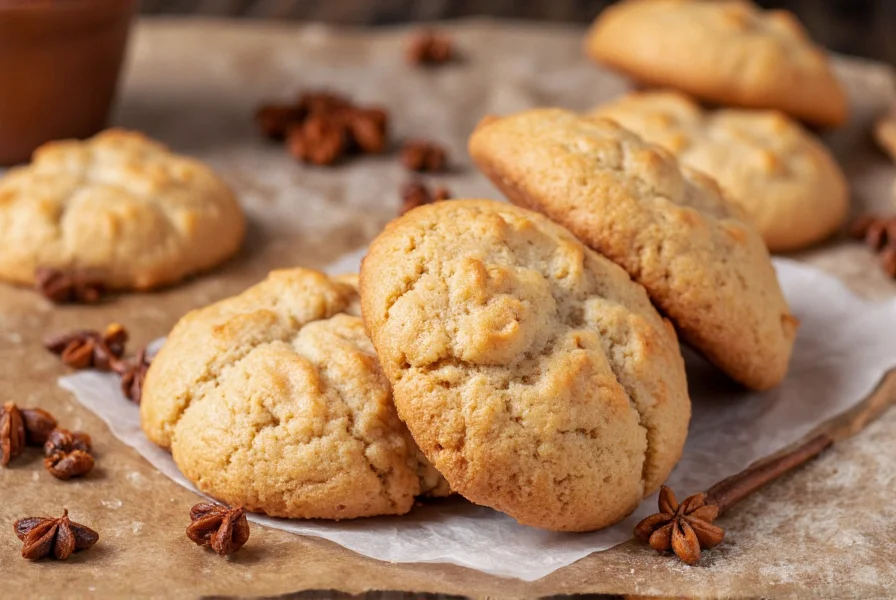Anise cookies are traditional baked treats flavored with anise seed (Pimpinella anisum), offering a distinctive licorice-like taste that has been enjoyed across Mediterranean and European cultures for centuries. These cookies typically feature anise seed as the primary flavoring ingredient, often combined with citrus zest, and can range from soft and chewy to crisp and crunchy depending on the regional variation.
Anise cookies represent one of the world's oldest flavored cookie traditions, with roots tracing back to ancient Roman and Greek baking practices. The unique flavor comes from anethole—the compound in anise seed that creates that characteristic licorice note. Unlike artificial licorice flavoring, authentic anise cookies deliver a complex, aromatic experience that balances sweet, spicy, and herbal notes. Properly made anise cookies shouldn't overwhelm the palate but rather provide a sophisticated flavor that complements coffee or dessert wines.

The Essential Ingredient: Understanding Anise
Many people confuse anise with similar-flavored ingredients, but true anise cookies use actual anise seeds (Pimpinella anisum), not star anise or fennel. Here's how they differ:
| Ingredient | Flavor Profile | Best For Anise Cookies |
|---|---|---|
| Anise seeds | Strong licorice, sweet, warm | Ideal - authentic flavor |
| Star anise | Sharper, more intense licorice | Substitute in emergencies |
| Fennel seeds | Milder, sweeter, more herbal | Creates different cookie profile |
For traditional anise cookies, freshly ground anise seeds provide the most authentic flavor. The seeds should be lightly toasted before grinding to release their essential oils, creating a more complex flavor than pre-ground anise powder. Properly stored in an airtight container away from light, anise seeds maintain their potency for up to two years. When shopping for ingredients for your traditional anise cookie recipe, look for plump, greenish-gray seeds that smell sweet and aromatic.
Cultural History of Anise Cookies
Anise cookies appear in various forms across multiple culinary traditions, each with distinctive preparation methods and cultural significance:
- Italian biscotti all'anice: Crisp, twice-baked cookies often served with coffee or dessert wine
- Greek amphiphonies: Traditional Christmas cookies shaped like shepherds' crooks
- Mexican conchas with anise variation: Sweet roll toppings with anise flavoring
- German Pfeffernüsse: Spiced cookies that sometimes include anise among other warm spices
The enduring popularity of anise cookies stems partly from anise's historical use as a digestive aid. Many cultures traditionally served these cookies after meals to help with digestion, a practice that continues in Mediterranean regions today. In Italy, anise cookies often accompany espresso, while in Greece they're traditionally served during holiday celebrations. Understanding the history of anise cookies reveals how food traditions travel and evolve across cultures while maintaining core elements.
What Do Anise Cookies Taste Like?
First-time tasters often describe authentic anise cookies as having a complex flavor profile that evolves as you eat them. The initial taste delivers a sweet, almost floral note, followed by the distinctive licorice-like flavor that gradually intensifies. High-quality anise cookies balance this strong flavor with complementary ingredients like citrus zest, almond extract, or warm spices.
The texture varies significantly by tradition—Italian versions tend to be crisp and dry (ideal for dipping), while Greek versions might be slightly softer. The best anise cookies achieve harmony between the bold anise flavor and supporting ingredients, creating a treat that's intriguing without being overwhelming. If you've ever wondered what do anise cookies taste like, think of a sophisticated version of licorice candy but with baking spices and butter notes that round out the experience.
Traditional Anise Cookie Recipe Framework
While specific recipes vary by region, most traditional anise cookies follow this basic framework. This authentic anise cookie recipe from scratch yields approximately 24 cookies:
| Ingredient | Measurement | Preparation Note |
|---|---|---|
| All-purpose flour | 2 ½ cups | Sifted before measuring |
| Anise seeds | 2 tablespoons | Lightly toasted and ground |
| Unsalted butter | 1 cup (2 sticks) | Room temperature |
| Granulated sugar | ¾ cup | Plus 2 tbsp for rolling |
| Eggs | 2 large | Room temperature |
| Orange zest | 1 tablespoon | Freshly grated |
| Baking powder | 1 ½ teaspoons | Fresh |
Method: Begin by toasting the anise seeds in a dry skillet over medium heat until fragrant (about 2 minutes), then grind them finely. Cream the butter and sugar until light and fluffy, then beat in eggs one at a time. Mix in the ground anise and orange zest. In a separate bowl, whisk together the flour and baking powder, then gradually incorporate into the wet ingredients. Chill the dough for at least 2 hours. Preheat oven to 350°F (175°C). Roll tablespoon-sized portions of dough into balls, then roll in additional sugar. Place on parchment-lined baking sheets 2 inches apart. Bake for 12-15 minutes until lightly golden at the edges.

Expert Baking Tips for Perfect Anise Cookies
Creating exceptional anise cookies requires attention to several key details that affect both flavor and texture:
- Seed quality matters: Use fresh, high-quality anise seeds—stale seeds lose their volatile oils and won't deliver proper flavor
- Proper toasting technique: Toast seeds just until fragrant; burning creates bitterness
- Dough chilling is essential: Minimum 2 hours chilling prevents excessive spreading during baking
- Measure flour correctly: Spoon flour into measuring cup then level—don't scoop directly
- Watch baking time carefully: Remove cookies when edges just begin to color for optimal texture
One common issue with anise cookie texture problems is cookies spreading too much. This typically happens when the butter is too soft, the dough isn't chilled sufficiently, or too much sugar is used. If your cookies spread excessively, try reducing butter temperature (chill it slightly more) or adding 1-2 tablespoons more flour to the dough. For those learning how to make anise cookies from scratch, patience with the chilling process makes all the difference.
Perfect Pairings for Anise Cookies
Anise cookies' distinctive flavor profile pairs beautifully with specific beverages and accompaniments:
- Coffee: The bitterness balances the sweetness and complements the anise flavor
- Espresso: Traditional Italian pairing that cuts through the richness
- Dessert wines: Vin Santo, Moscato, or other sweet wines enhance the experience
- Tea: Black teas with citrus notes work particularly well
- Cream: A small dollop of whipped cream creates a delightful contrast
For serving at gatherings, consider arranging anise cookies on a platter with complementary elements like dried citrus slices, whole anise stars, and small bowls of espresso beans. This presentation acknowledges the cookies' cultural heritage while creating visual interest.
Storage and Shelf Life
Proper storage ensures your homemade anise cookies maintain freshness and flavor:
- Room temperature: Store in airtight container with parchment between layers for up to 2 weeks
- Freezing: Freeze baked cookies for up to 3 months; freeze dough logs for up to 6 months
- Reviving stale cookies: Place in 300°F oven for 3-5 minutes to restore crispness
The high sugar content in traditional anise cookies acts as a natural preservative, giving them a longer shelf life than many other cookie varieties. However, the anise flavor gradually diminishes over time, so for optimal taste, consume within the first week. If you've made a large batch of Italian anise cookie variations, consider gifting some in decorative tins as edible presents.
Frequently Asked Questions
What's the difference between anise cookies and biscotti?
While both may contain anise, traditional biscotti are twice-baked to create an extremely hard cookie designed for dipping, whereas anise cookies typically refer to single-baked cookies that can range from soft to crisp but aren't specifically designed for the double-baking process that defines biscotti. Many biscotti varieties do include anise as a flavoring, but not all anise cookies are biscotti.
Can I substitute star anise for anise seeds in cookies?
You can substitute star anise for anise seeds, but use about half the amount as star anise has a more intense flavor. Crush the star anise and steep it in warm milk or cream for the recipe, then strain out the solids before using. For the most authentic flavor in traditional anise cookies, however, real anise seeds provide the distinctive taste that star anise cannot perfectly replicate.
Why do my anise cookies taste bitter?
Bitter anise cookies usually result from over-toasting the anise seeds or using stale seeds. Anise seeds burn easily—toast them only until fragrant (about 2 minutes in a dry skillet), and immediately transfer to a cool plate to stop the cooking process. Also check your baking powder freshness, as expired baking powder can create bitter flavors. Using pure anise extract instead of seeds can also cause bitterness if overused.
Are anise cookies gluten-free?
Traditional anise cookies are not gluten-free as they contain wheat flour. However, you can create gluten-free versions using a quality gluten-free flour blend. When adapting recipes for gluten-free anise cookies, add ½ teaspoon xanthan gum per cup of flour to help maintain structure. Note that gluten-free versions may have a slightly different texture than traditional recipes.
How can I make my anise cookies more flavorful?
To enhance anise cookie flavor, toast and freshly grind the seeds rather than using pre-ground powder. Add complementary flavors like orange or lemon zest, a pinch of cardamom, or a small amount of almond extract. Some bakers also brush finished cookies with anise-infused simple syrup. Remember that anise flavor intensifies slightly as cookies cool and store, so don't overdo the anise in your initial recipe.











 浙公网安备
33010002000092号
浙公网安备
33010002000092号 浙B2-20120091-4
浙B2-20120091-4